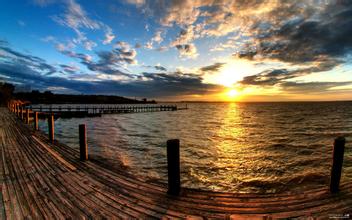背景:关于自发性颅内出血(SICH)患者能量需求的数据几乎没有。本研究旨在明确SICH重症患者静息能量需求(REE),并与预测基础代谢率(BMR)进行比较。
方法:对30例SICH非脓毒性重症患者,利用间接热量测定法(IC)在继发性出血后10天检测了其REE。同时利用Harris-Benedict(HB)公式也对预测BMR进行了评估。利用Bland-Altman分析对检测值和预测值一致性进行评估。同时检验了混杂因素(人口统计特征、疾病类型、疾病严重程度评分)对连续变量演变产生可能影响。
结果:通过HB公式预测BMR平均值是1580.3±262kcal/d,而检测值REE为1878.9±478kcal/d(117.5%BMR)。与预测值比较,检测REE值增加在所有研究点都有统计学意义(P<0.005)。检测值和预测值有良好相关性(r=0.73,P<0.001),但利用Bland-Altman分析对两种方法一致性检验存在均数偏倚(294.6±265.6kcal/d),同时一致性极值(-226—815.29kcal/d)已经超出了临床可接受范围。REE值表现出随着住院时间延长而增加的趋势(P=0.077),在7天之后差异就有统计学意义(P<0.005)。同时发现REE和体温之间(P=0.002,r=0.63),以及REE和第10天皮质醇水平之间存在显著相关性(P=0.017,r=0.62)。而REE和镇静深度,以及急性生理和慢性健康Ⅱ评分,格拉斯哥昏迷量表,以及Hunt和Hess评分之间并无相关性。
结论:在出血后早期,SICH重症患者能量需求有所增加,随着时间延长,出现一个增加趋势。与IC相比,HB公式低估了能量需求,而HB公式在发现组内患者个人差异方面有效性较低。
JPEN J Parenter Enteral Nutr. 2015 Nov;39(8):917-21.
Resting Energy Expenditure in Critically Ill Patients With Spontaneous Intracranial Hemorrhage.
Koukiasa P, Bitzani M, Papaioannou V, Pnevmatikos I.
G. Papanikolaou Hospital, Thessaloniki, Greece.
University Hospital, Democritus University of Trace, Alexandroupolis, Greece.
BACKGROUND: Data on energy requirements of patients with spontaneous intracranial hemorrhage (SICH) are scarce. The objective of this study was to determine the resting energy expenditure (REE) in critically ill patients with SICH and to compare it with the predicted basal metabolic rate (BMR).
METHODS: In 30 nonseptic patients with SICH, the REE was measured during the 10 first posthemorrhage days with the use of indirect calorimetry (IC). Predicted BMR was also evaluated by the Harris-Benedict (HB) equation. Bland-Altman analysis was used to evaluate the agreement between measured and predicted values. The possible effect of confounding factors (demographics, disease, and severity of illness score) on the evolution of continuous variables was also tested.
RESULTS: mean predicted BMR, calculated by the HB equation, was 1580.3 ± 262 kcal/d, while measured REE was 1878.9 ± 478 kcal/d (117.5% BMR). Compared with BMR, measured REE values showed a statistically significant increase at all studied points (P < .005). Measured and predicted values showed a good correlation (r = 0.73, P < .001), but the test of agreement between the 2 methods with the Bland-Altman analysis showed a mean bias (294.6 ± 265.6 kcal/d) and limits of agreement (-226 to 815.29 kcal/d) that were beyond the clinically acceptable range. REE values presented a trend toward increase over time (P = .077), reaching significance (P < .005) after the seventh day. Significant correlation was found between REE and temperature (P = .002, r = 0.63), as well as between REE and cortisol level (P = .017, r = 0.62) on the 10th day. No correlation was identified between REE and depth of sedation, as well as Acute Physiology and Chronic Health Evaluation II, Glasgow Coma Scale, and Hunt and Hess scores.
CONCLUSIONS: During the early posthemorrhagic stage, energy requirements of critically ill patients with SICH are increased, presenting a trend toward increase over time. Compared with IC, the HB equation underestimates energy requirements and is inefficient in detecting individual variability of REE in this group of patients.
KEYWORDS: calorimetry; critical care; nutrition; nutrition assessment; research and diseases; spontaneous intracranial hemorrhage
PMID: 24928226
DOI: 10.1177/0148607114539352


全部评论(0)